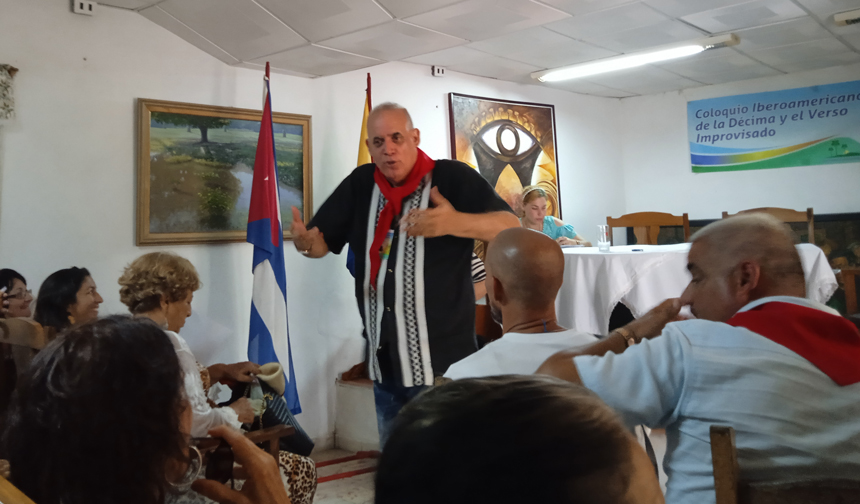
Reporters with 26 Newspaper move throughout the festival of the Cuban peasantry, and to the Caracol hall of the National Union of Writers and Artists of Cuba (UNEAC), we arrived to learn a little more about the peasant roots of the Island and the traditions that accompany us.
The first moment was led by Rafael Lara González, an expert in issues related to the safeguarding of Intangible Cultural Heritage, who showed -through a series of documentary fragments- the Cuban rural world, and the ways that each town has sought to preserve traditions.
The fiesta of Nengón Kiribá, a documentary filmed in Baracoa, the first Villa of Cuba, shows in a natural environment full of peasant music the dances of the inhabitants who -according to themselves- "do as if they were piling coffee." The curious thing about these festivities, whose roots come from the 18th century, are the cuisine, the dances, and the integration with society.
"Those who come to the municipality of Baracoa can enjoy the music, a party that lasts up to four days, and the fundamental thing is the link with traditional culture," explains Lara González, while on the screen you can listen to a resident of the Prime Village affirm that the Nengón and the Kiribá are the primary dances, before the son and that they, in this area of the country, are obliged to keep their cultural roots alive.
In this long explanatory path of traditions, one cannot fail to mention the practice of the Guasimal group, from Manzanillo, Granma, with the Escalona family as the protagonist, taking care of this jewel of local Cuban culture for 176 years, who are characterized by the manufacture of their own musical instruments, with the peculiarity of sounding as an organ.
"One of the most important cultural processes that we have in our country, with the Guasimal tradition-bearing group, is that they are unique, and being able to make their musical instruments with their own hands and give them such a peculiar sound, distinguishes them."
Isleños de Poza is one of the most authentic groups of the Canarian lineage in Cuba, and according to the researcher "Poza is the most legitimate and validated niche in which the cultural diversity of the Canarian world on the Island is combined."
With the presence of a part of this group, we will count on the Cucalambeana Fiesta, who brought part of their local culture to share it with the people of Las Tunas, from whom they had moved away two decades ago.
Another of the practices in the fields of Cuba is the festival of the blue and red sides, which has its origins in Majagua, which the Culture methodologist also spoke about at this meeting. "In these battles of sides, the identity colors of our national flag are identified."
In these pitched battles between dancers of the most guajira music of this land, respect for the steps, tradition, coordination, and a good eye on what is done stand out, because we are talking about a confrontation of years.
The mixture of Franco-Haitian cultures in this land, as well as the Afro-Cuban roots, and forging in the infants the broadest cultural traditions of the nation, constituted the culmination of the workshop, in which researchers and lovers of the autochthonous met, of the popular theater, music, dance, cooking and all that long path that moves this small Island.